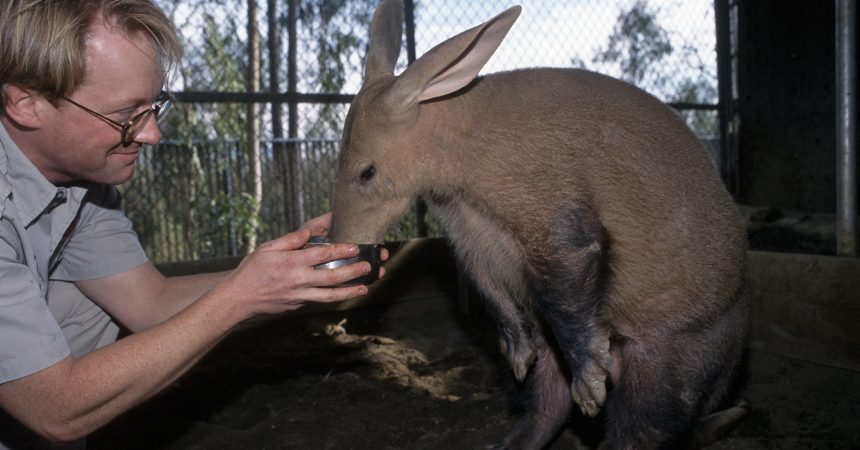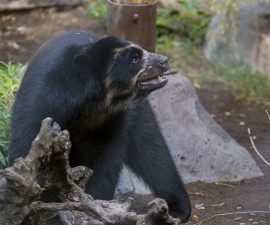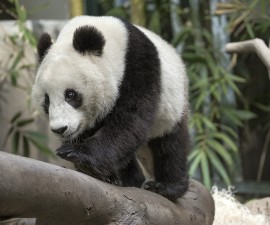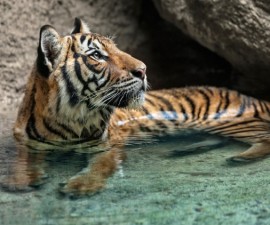As the San Diego Zoo’s centennial year comes to a close, we’re looking back at how we have fed the many beloved mouths that call the Zoo home. You can read Part I here. Part II highlights some of the folks behind the food: zoo nutritionists and their role in animal care.
Before 1990, the San Diego Zoo consulted Duane E. Ullrey, Ph.D., from Michigan State University on matters of animal nutrition. In 1993, the Zoo hired its first animal nutritionist, Dr. Mark Edwards. Earlier, For eleven years, Dr. Edwards coordinated the nutrition division of the veterinary services departments at the San Diego Zoo and San Diego Zoo’s Wild Animal Park (now the San Diego Zoo Safari Park). He developed the first nutrition program for San Diego Zoo Global, coordinating all aspects of dietary husbandry and nutrition for the combined collections, totaling 8,000 specimens representing over 800 species. Today, our Nutritional Services department is headed by a director of animal nutrition and includes associate nutritionists, a nutrition department manager as well as a supervisor, a research associate, four senior nutritional service assistants, and three nutritional service assistants.
Why is understanding nutrition of zoo animals so important? Like humans, the food that the animals eat provides energy and plays a vital role in maintaining health and reducing risk of disease. The nutritionist’s goal is to develop diets that are as similar as possible in nutrient content to the natural diet of the species and to maintain these diets using science-based formulation techniques. This must be done with varying resources and working knowledge of animal behavior, as well as nutrient composition of various feeds. Specific nutrients are required for a healthy diet, but the physical form of food and its presentation can provide enrichment and promote normal feeding behavior. The nutritionist team (the director of nutritional services, two associate nutritionists, and a research associate) work with keepers and veterinarians to develop and adjust diets for each animal.
Diets have changed over time. For example, in the Zoo’s early years, bear diets involved food rewards such as bread or “bear biscuits” for desired behavior (waving, sitting up, etc.). At that time—before we knew what we know now!—the Zoo allowed the public to feed the animals food that they brought from home (such as bread, crackers, peanuts, and cookies). That practice has long since ended, much to the improved health and well-being of the animals in our care. Our nutritionist team works closely with veterinarians and other staff members to develop optimal zoo diets.
Diets today include fresh restaurant-quality fruits and vegetables that are weighed and distributed each morning. Every animal diet is tracked, recorded, and maintained in the diet database. Continuous monitoring plays a large part, with nutrition being consistently assessed—for example, in response to changes in weight and activity. Even when all of this information is in place, it is potentially very difficult to devise optimum diets or to substitute for wild ones. Yet, our team of nutritionists and Forage Warehouse staff are on the case 365 days a year, to keep our animals in roaring good health!





